Twilight Structure Breakdown
I’m incredibly excited to introduce a new set of contributors to The Hutch Files—my students in the Storytelling 4 class in the MFA Program at the University of Central Arkansas. Over the next few weeks, I’ll be posting their structure breakdowns on some of their own favorite films. I think they’ve done an incredible job and bring some great insights to the films they’ve chosen. Please see their individual bylines at the top of each post. So here we go:
One of my all-time favorite movies is Twilight (2008) directed by Catherine Hardwicke, starring Kristen Stewart and Robert Pattinson. It may come as a surprise, but I was actually very late to the bandwagon, and didn’t start to dip my toes into the franchise until late teenagedom. Though seeing as the saga took popular culture by storm, I couldn’t outrun the films for long. The Twilight movie, at its core, has a fairly standard structure, which did force it to diverge from the book more than the mega-fan may have preferred, but all in all the film was definitely fun to break apart and put back together in this analysis. So hold on tight spider monkey, let’s get into the breakdown:
As always, these breakdowns contain SPOILERS, and are only recommended if you've already seen the movie. You can check the introduction to these breakdowns, to get an overview of the process and philosophy.
The Basics
Director: Catherine Hardwicke
Writers: Melissa Rosenburg, Stephanie Meyer
Release Date: 2008
Runtime: 122 minutes.
IMDB: https://www.imdb.com/title/tt1099212/
Movie Level Goals
Protagonist: Bella Swan
External: To be with Edward Cullen
SUCCESS | MIXED | FAILURE
Internal: None (I’ll explain in the Observations section)
Three Observations
Twilight is an interesting movie, for sure. There seems to be a solid line between loving this film to death or loathing it beyond belief, and I hope to muddle that line a bit with this breakdown. While it isn’t the greatest film of all time, it holds a special place in my own heart, and there are some unique aspects of this movie that, maybe being further expanded upon, could sway some haters to give it another chance. When it comes to the film’s structure, there are a few things that stood out from the norm.
Observation #1: No Internal Goal
The first observation I’d like to dive into is the interesting relationship between Bella’s external and internal goals, or more specifically, the lack thereof. In a typical film, a protagonist has both an internal and an external goal, and there is usually a relationship between these goals, whereas one leads to or inspires the other. In the case of Twilight, though, our protagonist only has one goal: to be with Edward Cullen. The goal of being with Edward may seem like it would be better suited as an internal goal, with Bella’s external goal more focused on stopping James from killing her, but I argue that James as a character is less of the main antagonist of the film than he is simply another bump in Bella’s road to a relationship with her vampire, Edward.
Let’s break it down a bit more to make it easier to digest. Bella’s goal takes root, fully, by the climax of Act 2, when not only is it revealed that Edward Cullen is a vampire, but the two teenagers confess their feelings for one another. In a voiceover, she explains that she is madly in love with the 109 year-old, and that he also thirsts for her blood. By this moment in time, James has yet to be introduced. While we as an audience know of his existence, we do not yet know of his intentions, and Bella and Edward have not come into contact with him either. This is an unusual structure if we were to continue with the narrative of James being the antagonist; the protagonist and antagonist would have already met by the end of Act 2 in a typical four-act structure film. Which makes one question, then, who is the true antagonist here, if not James? The answer may shock you, but Edward Cullen, Bella’s own love interest and our favorite bloodsucker, has been the antagonist all along (if we define the “antagonist” as the person opposed to the protagonist’s main goal.
And then it comes full circle: In order for Bella to complete her movie-level external goal of being with Edward, she must “defeat” Edward and his goal of deciding whether or not to be with Bella. She has to convince Edward to stay, and he does not make it an easy endeavor. From the very beginning, he resists his temptation, telling Bella that the two of them cannot be friends. When Bella figures out that Edward is a vampire and we witness their tense conversation in the woods, Edward shows her his true self in a failed attempt at scaring her off. Then we meet James in the clearing, which becomes the final conflict between Bella and Edward, and the final straw for both of their individual goals. Bella’s goal of being with Edward is the external that structures the movie, and all that Bella has her sights set on. And by the way, it’s not unusual in a romance for the romantic goal to be the external goal. She has no internal goal because the only thing she wants throughout the film is to be with Edward Cullen. That is her one and only goal, and it is dependent on his.
Observation #2: A Quick Paced Narrative (compared to the book)
The next observation I noticed deals with the adaptation of the book into a movie for the big screen. Adapting literature into a screenplay is nothing new; we as filmmakers have taken inspiration from books for as long as cinema has existed, but in the case of Twilight, the movie version seems to have left a few details out in order to cram the entire 544 pages into a 2-hour film. Of course, most book adaptations have to be shortened or re-worked in order to fit the movie format, but Twilight’s restructuring piqued my interest as I was watching the film for this breakdown.
The inciting incident is the first sign of this film being a little cramped, with Bella’s first glimpse of Edward landing just before the 10 minute mark. In a typical four-Act structure, the inciting incident often happens around 15-17 minutes into the film, so we’re already a few steps ahead, and we just keep speed rolling from there. It’s almost whiplash as we watch Bella and Edward go back and forth between being friendly and not speaking to one another. Once it’s revealed that Edward’s a vampire, we slow down a bit, with the whole conversation in all its glory taking up 15 minutes of the film.
The most rushed, though, I would say is the ending, or the last Act in general. As soon as James is there, it seems like no time passes between their first meeting and Bella laying on the floor screaming in agony after being bitten. Looking at it from a structural point of view, the Act 3 climax closes out an hour and 25 minutes into the film, as James decides to hunt Bella and her and the Cullens are forced to figure out a plan to hunt him first. Then, only 15 minutes later, we reach Act 4’s climax as Bella lays in the hospital bed, begging Edward to stay with her after they have defeated James and destroyed him.
Observation #3: Act 4
To piggyback off of that, Act 4 as a whole is interesting in its own way when it comes to its structure and payout. Bella’s external goal of being with Edward is basically pushed to the back burner while she and the Cullen family ban together to stop James within the first 15 minutes of the Act, and we are left with 20 minutes of screentime to go. So where does that leave us? Bella has yet to complete her movie-level external goal of being with Edward. This is where it becomes unique. Many would assume that the climax of the Act is when James bites Bella in the ballet studio, and while this is a climatic moment for her, this is not the climax of this Act.
As I pointed out earlier, her external goal and Edward’s goal are dependent on one another, and lead to each other in their own unique way. Now that Bella has stopped James, the film can move back to her goal of being with Edward. This is where our Act climax comes into play, with Bella begging Edward to stay after he reveals that he’s contemplating leaving her alone for her own safety. After she stumbles over her words as she pleads with him, Edward agrees to stay and the camera pans as it transitions from the hospital in Phoenix, Arizona back to Forks, Washington for the 10 minute epilogue of Edward taking Bella to the prom. The Act splits itself in half, giving the first half to the final source of conflict for her goal, and the second to the resolution after her success.
So, all in all, Twilight’s structure becomes unique when looking into the singularity of Bella’s external goal, revealing the true antagonist of the film, and the rushed nature of the film overall. While the film is traditional in narrative, there are moments that stand out amongst the story, making it a fun and unique movie to delve into.


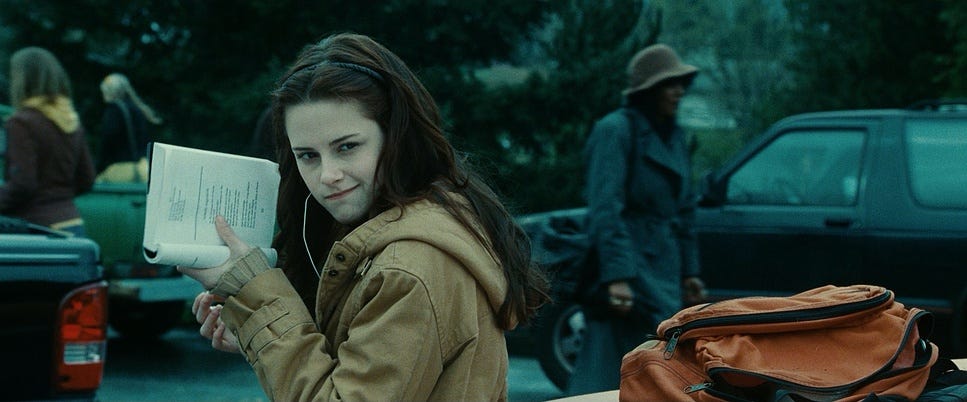
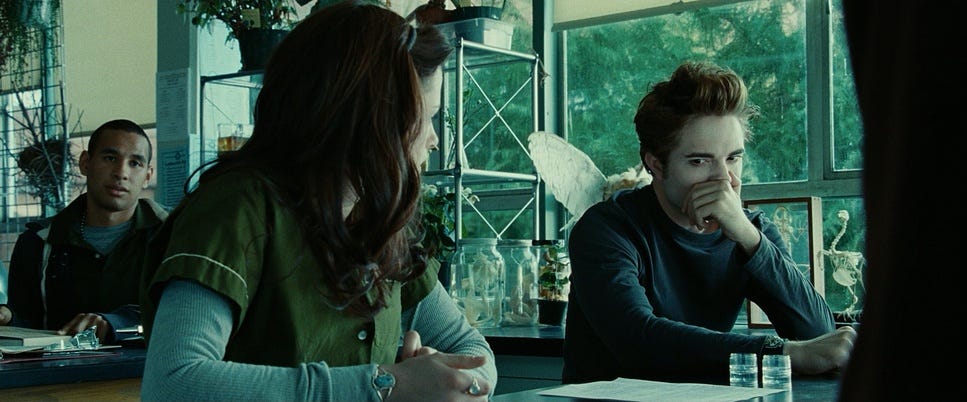
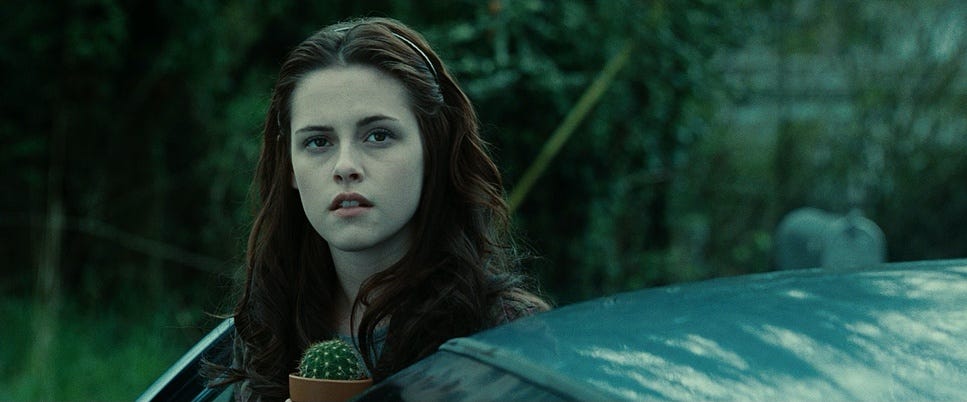



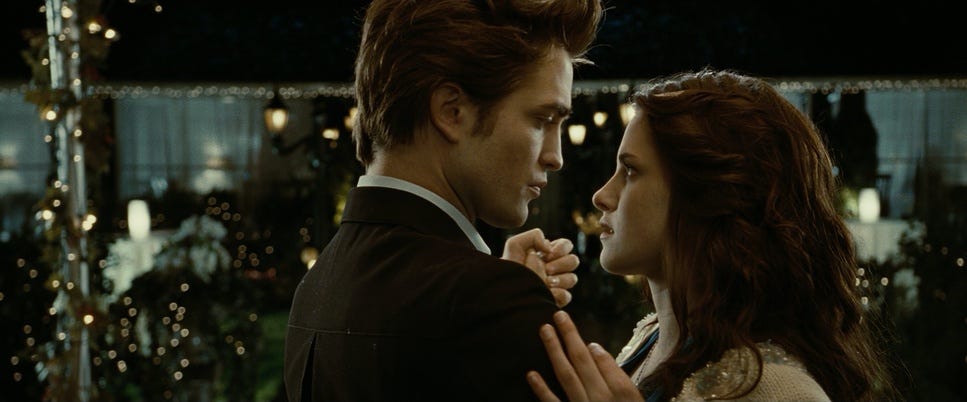
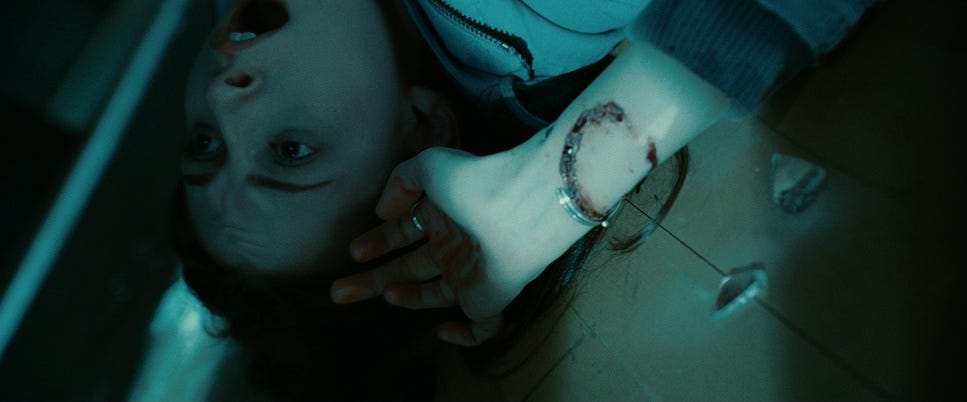

Wow! What an incredible breakdown of this film using the four-act structure. Your analysis of Bella's external goal—being with Edward—and how that positions him as the antagonist is truly eye-opening. I’d never thought about it that way before, but you're absolutely right. If Edward hadn’t resisted their relationship so much, the climax in the fourth act wouldn’t have been nearly as satisfying. I also love your emphasis on how the film condensed so much from the book while staying true to its essence—it really makes me appreciate the effort behind this adaptation even more. Thank you for sharing such thoughtful insights on this cinematic gem!
I really enjoyed this analysis of the first Twilight movie and learning about the construction of films! Edward being the antagonist does explain a lot, that is interesting. And Bella's only goal of being with Edward (dumb as it seems) does make sense in New Moon when he asks her to give him 5 years and she say's that's too long. Not too long if you want to go to college or "live" a little as Jacob says. I hope you will do the other Twilight movies too! Thanks for doing this!